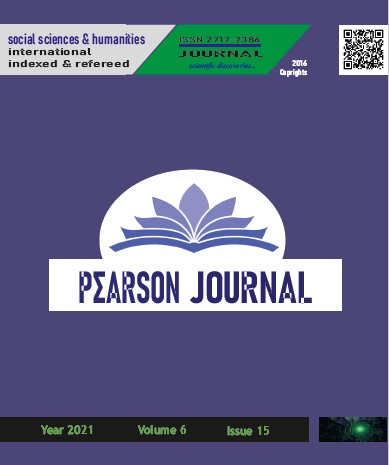THE ROLE OF THE SHIRVAN ASHİK ART IN AZERBAIJAN ASHİK ART
DOI:
https://doi.org/10.46872/pj.408Keywords:
Shirvan, ashik, Azerbaijan, melodyAbstract
The art of minstrel, whose etymological meaning is "ash", "light", "love", is common in all Turkic peoples, including Azerbaijan, Göyçe, Borchali, Nakhchivan, Yerevan, Ağbaba, Çıldır, Derbent, Karabakh, Ganja, Tovuz, Gazakh, Shamkir, Shamahhi, It was developed in Ismayilli, Agsu, Goychay, Khizi, Guba, Tabriz, Urmia, Khorasan regions. Although the Shirvan minstrel environment has been included in the research of philologists, it has been little studied in musicology. From this point of view, the works of K. Akhundova (Dadaşzade), Ahliman Rahimov, Aliyeva Hanim devoted to examining the Shirvan ash circle are quite remarkable. Shirvan ashik environs have spread over a wide area, including Shamakhi, Ismayilli, Agsu, Goycay, Hızi, Ujar, Gobustan, Mugan region, Salyan, Sabirabad and Belasuvar regions. Shirvan minstrels always responded to cultural events with their art, and took an active role in minstrel congresses and other important state events that played an important role in the development of this art. Shirvan ashik’s have always come to the fore with their musical creations. In Shirvan's minstrel environment, air is played in the accompaniment of various instruments, unlike other regions. It included two balabans, a percussion instrument (double drum) and a ashik singer, including a ashik. In this respect, the group of Shirvan ashik’s can be called a community. One of the characteristic features of the representatives of the environment is that the mugham is performed at the beginning of the air, sometimes between the second and third lines, which shows the skill of the minstrel. Balaban performers also have other responsibilities within the group. It adds color to the general sound of the air accompanied by two bitterns. While one of the balaban players plays a musical theme, the other has a kind of "helper" structure and takes exemplary notes in accordance with the mood and melody of the air. The inclusion of the percussion instrument in the backing demonstrates the uniqueness of this setting not seen in other regions. Although they can be found in other environments such as Güzell?, sikeste, keremi, muhammes, gerayli, they are completely different from Shirvan airs in terms of melody. Peşrov and Shesangi melodies belong only to Shirvan ashik’s and are not performed in other settings. Shirvan ash tunes are also very rich in terms of musical style and contain developed moments, melodies and rhythms.




